- Updated On: July 11, 2025
Best Solar Buyback Plans in Texas:
A Complete Guide
Solar power is becoming an increasingly popular choice for homeowners and businesses in Texas. It’s a sunny state, therefore many Texans believe that investing in solar panels is a wise decision for energy savings. One of the important factors in maximizing the benefits of your solar investment involves choosing the best solar buyback plans in Texas. With a buyback plan, you can sell excess solar energy to the grid and reduce your electricity bills by earning credits or money. However, selecting the best solar payback plan might be difficult for Texans due to several options offered by electricity markets. It becomes critical to compare and understand what each plan includes.

If you are planning to go solar in Texas or upgrade your existing system, this guide will help you identify the best solar buyback plans in Texas. We will compare the top providers and highlight their plans to assist you in making an informed decision.
Understanding the Texas Electricity Market
In Texas, there are regulated and deregulated energy markets. Regulated ones, which cover about 15% of Texas’s population, home, and business owners will only benefit from producing excess energy and putting it on the grid if their utility has a solar buyback program.
However, the majority of Texans 85% live in a deregulated electric market where they can choose their retail electric providers—and there are a bunch! Some of these offer different types of solar buyback plans, some have higher fees than others and different ways of reimbursing for the energy supply to the grid.
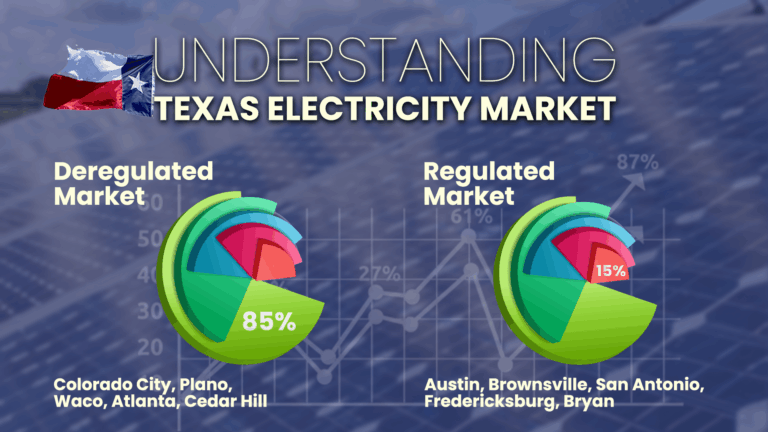
If you are going solar in Texas in a deregulated area, look for a Retail Electric Provider that offers a solar buyback plan to optimize your savings. You cannot, however, choose who will deliver your electricity. Four Transmission and Distribution Utility (TDU) providers: Oncor, AEP, CenterPoint, or Texas New Mexico Power handle the operations. Your power statement will include charges from your preferred REP and the TDU.
On the other hand, in regulated areas, you do not select a REP. Instead, a local utility or electric cooperative is in charge of both energy supply and delivery. This implies that you have limited choices for power plans and solar buyback as per your local utility offers.
Understanding whether you live in a deregulated or regulated part of Texas helps you make better decisions about going solar and selecting the best options for your energy needs.
What is the available solar buyback plans in deregulated Texas market?
The deregulated power market offers three types of solar buyback plans. Also, there are only a few REPs who offer such programs to customers. The categories include:
- Uncapped credit plans
Credit cap plans
Real-time metering plans
Uncapped Credit Plans
Uncapped solar buyback plans in Texas help solar homeowners save money by compensating them for excess solar energy. REP provides bill credits for excess electricity generated by your solar panels. These credits can reduce your future electric costs, especially if your panels produce less power. The credits’ value matches your REP “energy charge rate” for grid electricity. However, remember that when you use grid electricity, you are responsible for additional TDU (Transmission and Distribution Utility) expenses. These extra expenses are not in the buyback rate; the credits you earn for excess solar power have less value than the price you pay for grid electricity. Overall, this approach reduces energy bills by making the most of your solar electricity.
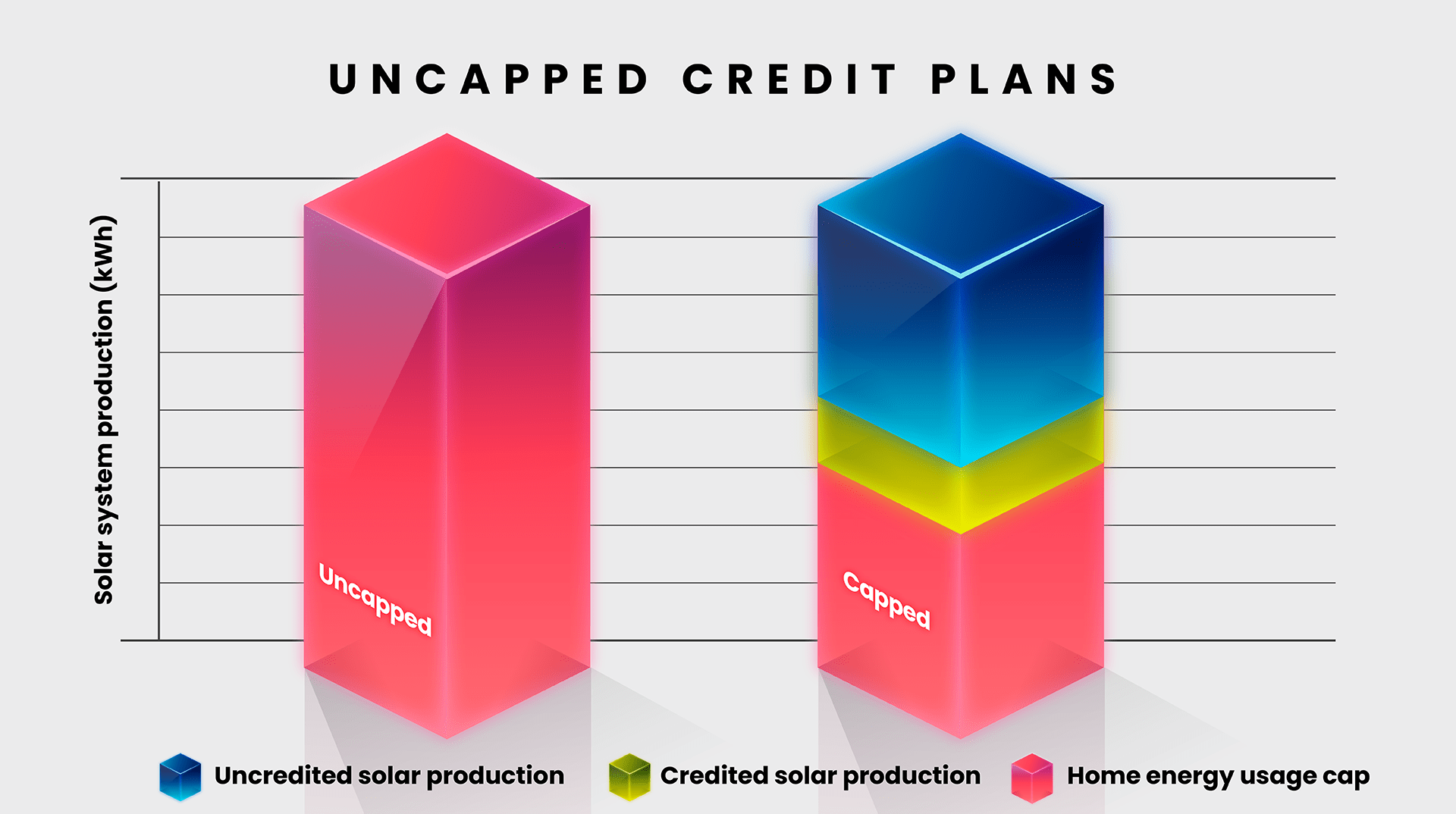
Capped Credit Solar Buyback Plans
Some retail electric providers (REPs) in Texas limit the amount of solar energy they credit. They only credit you for the solar energy that matches your home’s electricity consumption from the grid that month. For example, if you use 600kWh from the grid but generate 900kWh with your rooftop solar panels, you will only get credited for 600kWh. The extra 300 kWh is sent to the grid without being paid.
This cap means you’ll save less than with uncapped programs. These REPs credit solar energy based on the energy charge rate, less TDU (Transmission and Distribution Utility) charges. As a result, you pay more for grid electricity than you are credited for solar energy, eliminating your overall savings.
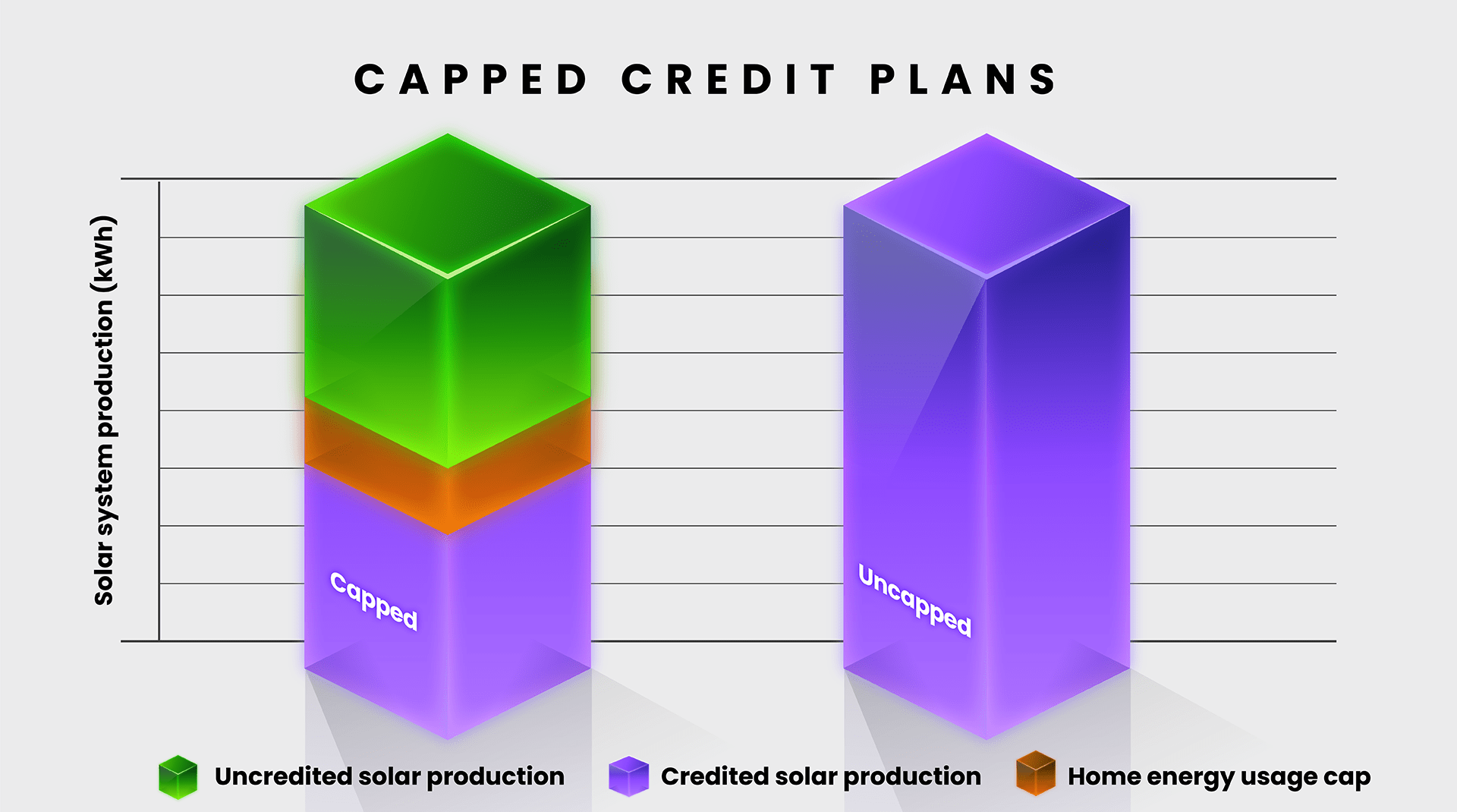
Real-Time Metering Plans
Real-time metering plans instantly credit you for any excess solar energy. For example, if your solar panels generate 4kWh more than your home requires at 2 PM, the REP will credit you instantly for those 4kWh. Unlike conventional plans, which calculate net production at the end of the month, real-time plans use the retail market price of power at the time to calculate the credit amount.
As your solar generation is credited instantly rather than netted against your monthly energy consumption, the rate the REP pays you for extra solar energy is typically lower than the cost at which you buy power. This means that real-time metering plans are often less cost-effective than programs that credit solar energy at a set energy credit rate.
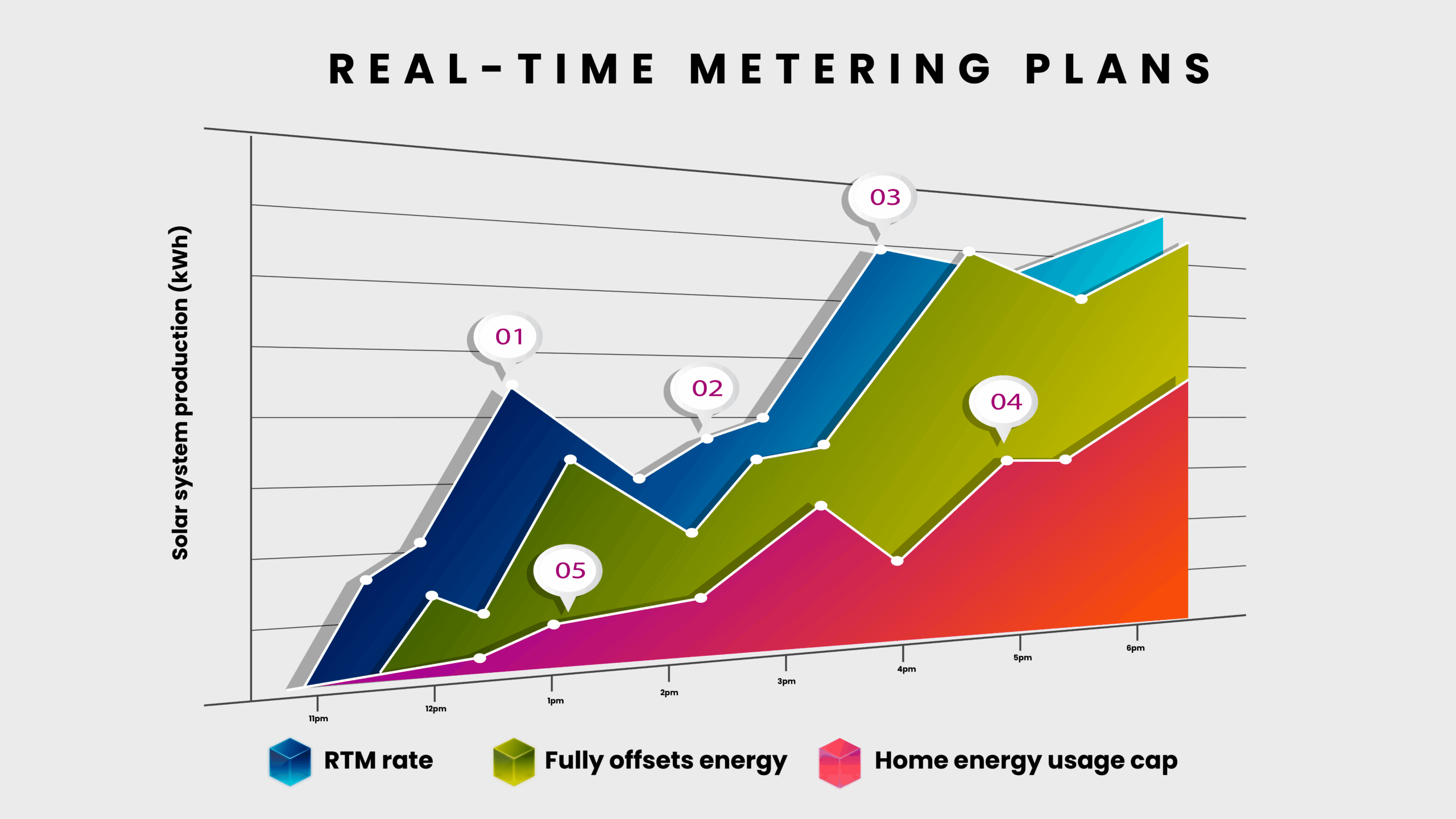
What are the solar buyback plans offered in regulated Texas market?
In the regulated part, utilities offer buyback programs in Texas. Let’s have a look:
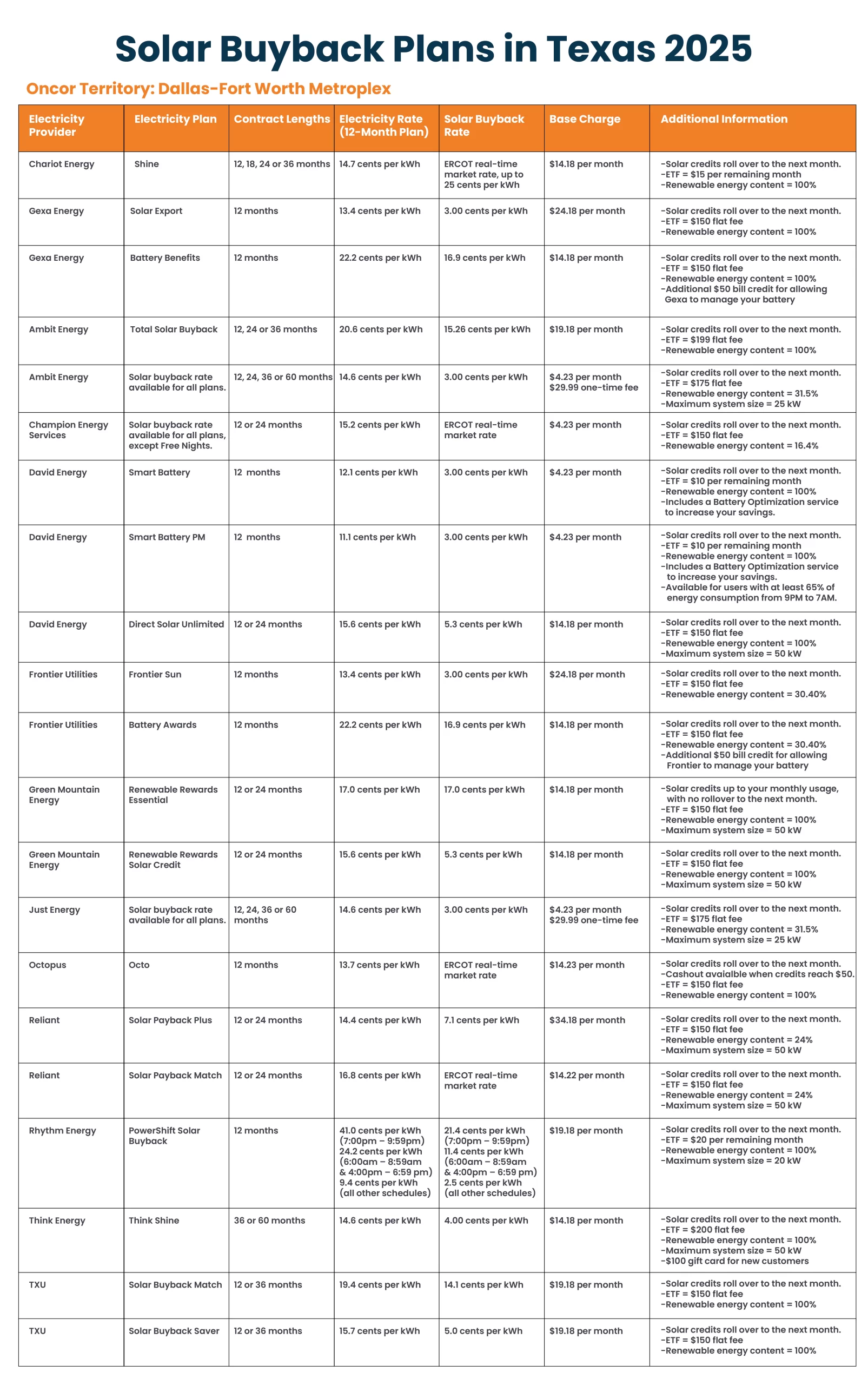
Austin Energy's Solar Buyback Plan
Austin Energy is the local utility company in Texas that gives you solar billing. In addition to the retail or real-time market pricing, it charges solar energy based on the Value of Energy (VOE) rate. The VOS rate focuses on saving energy, lessening the burden on the grid, and the benefits of solar power to the environment.
Austin Energy offers two meters: one for solar production and the other for home electricity consumption. Your bill will have two parts: energy charges and solar credits. Energy charges are priced by utilizing the retail rate, which is attained when you multiply your total electricity consumption by the retail rate. Solar credits are computed using your whole solar production between the VOS rate. If your solar credit exceeds your energy charges, the additional credit goes over to the next month. This method guarantees you will fully achieve solar efficiency and will have big savings for solar homeowners.
Entergy Texas Solar Buyback Plans
Entergy Texas, which serves almost 500,000 consumers across 17 southeastern Texas counties, has three choices for solar owners through its net metering programs:
Option 1: Entergy will not purchase the electricity generated by your solar system. You will have a meter for recording your net electricity use, but any extra energy sent to the grid will not earn you credits.
Option 2: This option offers the best solar savings. Entergy will buy back your excess solar energy at a solar buyback rate that is lower than the retail rate and varies seasonally.
Option 3: Entergy will repurchase all of the electricity your solar panels generate at the same solar buyback rate. This results in slightly lower savings than Option 2, since you sell all of your solar energy rather than utilizing it to balance your electricity consumption.
CoServ's Solar Buyback Plan
CoServ, a North Texas power cooperative, provides customers with a solar buyback plan. This program rewards solar energy production at the retail power rate, but only for the energy you use each month. If your solar panels produce more electricity than you consume in a month, CoServ won’t pay you for the excess energy. This system is comparable to credit cap plans used by other retail energy suppliers (REPs).
CPS Energy's Solar Buyback Plan
CPS Energy provides electricity to San Antonio homes, and also offers a solar buyback plan known as “net billing.” Under this plan, solar energy equal to your home’s monthly usage will be credited at full retail price. Any additional solar energy is credited at a lower rate.
Whether you live in a regulated or deregulated market, going solar in Texas is a worthy investment for homeowners and businesses. The abundant sunshine makes it a good choice for generating solar energy. However, it is also important to be able to choose the best retail electric provider (REP) and solar buyback plan to maximize your solar savings. Look for plans with cheap rates and fewer restrictions on extra energy credits.
Chariot Energy Solar Buyback Programs
Chariot Energy provides two types of solar repurchase plans. The most effective alternative for your home will be determined by your consumption and solar energy production. The Chariot Shine plan is designed for homes who have large solar arrays that regularly produce excess power. If your solar credit surpasses your energy charge in a given month, you can carry the difference forward. You can take use of the Chariot Rise plan even if you have not yet installed solar panels. Your system can be designed so that monthly generation falls below consumption, allowing you to be compensated for solar energy at retail pricing. This approach is also feasible if you have a solar panel system that does not generate more electricity than your home requires monthly.
Gexa Energy Solar Buyback Programs
Gexa Energy offers the Solar Buyback 12+ plan, which pays you for extra solar energy at the same amount as you are regularly charged. If your solar generation exceeds your use during a given month, the unused credit can be carried forward and deducted from future invoices.
Just keep in mind that your consumption is subject to a TDU cost. In the Oncor territory (DFW), you pay 4.5403 cents per kWh more, while in the CenterPoint territory (Greater Houston), you pay 4.0189 cents per kWh. When you receive credit for excess solar production, you are rewarded at 15.4 cents/kWh, excluding these costs.
Champion Energy Solar Buyback Programs
Champion Energy offers multiple electricity plans including a solar buyback option, along with additional benefits:
- Champ Saver offers fixed kWh prices for 12 or 24 months.
- Champ Silver offers discounts for clients aged 60 and beyond.
- Free Weekends: 24 months of free electricity during weekends.
When you export surplus solar power, Champion Energy applies the wholesale market’s real-time settlement price, which changes every 15 minutes. This can be useful during peak demand periods in the summer, when the wholesale price can rise far above your retail price.
Shell Energy Solar Buyback Program
Shell Energy offers a solar buyback program for the Oncor and CenterPoint service areas. All surplus generation from solar PV systems is credited at the current wholesale price and deducted from future power bills.
- Solar buyback credits are not limited and can be carried over to the next month. However, they expire once a year in December.
- Optimize your solar panel system for home usage to minimize unused credits at the end of the year.
Moreover, partnering with a trusted and experienced solar installation company near you is also vital. A certified installer like SolarSME will ensure your system is efficient and customized to your energy requirements. They can also help you explore the best solar buyback plans and various solar incentives in Texas, such as tax credits and rebates, to reduce upfront costs.
Solar energy not only reduces your electricity bills, but it also contributes to a cleaner environment. It’s a long-term investment that boosts your home’s value while lowering your carbon footprint.
So, get a FREE Estimate of your solar savings and start your solar journey.
Related Articles:
The solar trend is booming in the U.S. as people are switching to solar energy as a solution to get rid of high energy bills and power outages.
Solar energy is becoming popular across the U.S. as homeowners and businesses seek ways to lower their energy costs and reduce grid resilience.
Want to go solar in Texas and lower your energy bills, but worried about the cost of solar? AEP Texas customers can cut $1000s off that cost!



